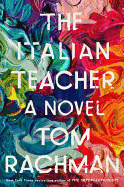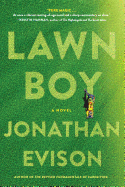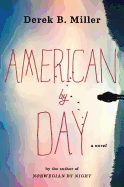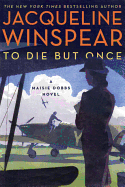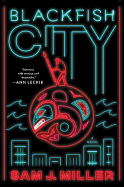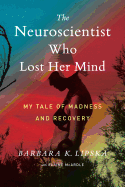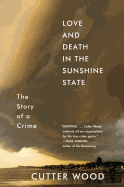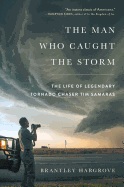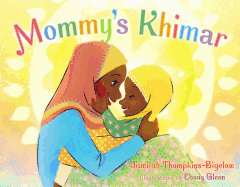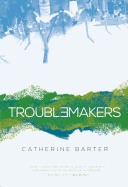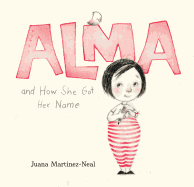 |
| photo: Nuno Ferreira Santos |
Derek Miller has built a career in international affairs, and that experience has shaped his novels, which include Norwegian by Night and The Girl in Green. In American by Day (out now from Houghton Mifflin Harcourt; reviewed below), a Norwegian detective travels to the United States to search for her missing brother. A Boston native, Miller now lives in Oslo with his wife and children.
While readers don't need to have read Norwegian by Night to understand the story of American by Day, the two are definitely interrelated. Did you always know you wanted to continue the story in some way?
Norwegian by Night was Sheldon's story, not Sigrid's. That book was almost an inversion of a traditional police procedural, in that the police and the procedural were less important than the lives and stories of the main characters. It had not occurred to me to write another story with Sigrid investigating another crime in Oslo. I wasn't interested in a series in that traditional sense.
I did, however, love Sigrid, and wondered how and whether I could return to her later. Once I came up with the idea of bringing her to America and inverting the fish-out-of-water experience, and having her investigate but not as a cop on her own beat, it came together. The story coalesced once I considered the related challenges around European immigration and American race matters from a policing perspective. At that point, I allowed the characters to take over to see what would happen next. Which is always the fun part.
Expanding a bit upon the "fish-out-of-water" idea, I was struck by how different America looked (to me, as an American reader) when viewed through Sigrid's eyes.
I was watching Beyoncé's Lemonade movie. In one memorable scene, she drives a monster truck over a bunch of old cars on an urban street. A lot of the Internet chatter about the scene talked about girl power, and black girl magic, and all these tropes about femininity and race. They were all perfectly reasonable, and many women (especially women of color) found it either fun or empowering or both. But I never read anyone saying, "that is one angry American woman." Which is funny, really, because if you pull back far enough, that was the fundamental cultural gesture: only an American woman would express her outrage at being cheated on by driving a monster truck over a bunch of parked cars. Which isn't to say everyone wouldn't enjoy it, but it requires certain cultural resources to mix together that particular cocktail. So, where many people saw an empowered black woman, I first saw an American.
A deep irony--but also truth--about the American experience is that our Americanness is often invisible to us. Not only because our culture is the water in which we swim, as David Foster Wallace might describe it; that's true for all cultural systems. Rather, the distinctiveness of America is how one of its defining characteristics is to deny group characteristics and attribute everything to individuality. For people who often feel on the fringe of American life--for reasons of race, or religion, or sexual preference or whatnot--it can feel impossible to get into the center of it. What they often forget is how deeply American they already are.
If this book lets us see ourselves in a fresh and rewarding way--even if it is somewhat uncomfortable--I say great. Literature should do that. Comedy should do that. Scholarship should do that.
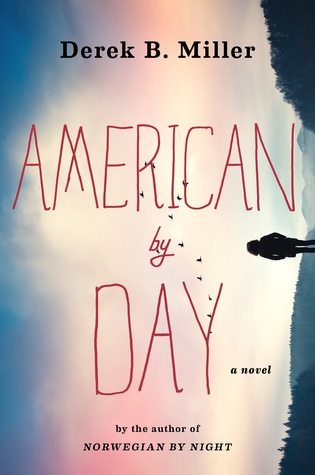 American by Day is surprisingly comedic, given the heaviness of some of its subjects.
American by Day is surprisingly comedic, given the heaviness of some of its subjects.
Yes. I like funny. I've been thinking about the relationship between comedy and tragedy quite a lot lately and here's a shorthand on what I've concluded (though a whole book might be in order): tragedy sits at the center of what we know and understand. The dead child, the lost love, the dream denied. Comedy, however, sits at the edge of what we observe and is often one step beyond it. A big reason we listen to comedians, other than to laugh, is to see something seemingly familiar in a new way. I think comedy is a very, very powerful tool for social analysis and for engaging readers both emotionally and mentally. It exists in the realm of both the entertaining and the unexpected.
If you had to place American by Day in one genre, which would you pick?
Placing the book and placing myself are different matters. I think of myself as a novelist first and foremost, and each project calls out for a certain form or structure and sometimes that fits neatly into a genre. Other times it doesn't. My job is to try to tell a story and make sure that the form and function align. Admittedly, I do allow my genre interests to vary. But why not? I watch crime and science fiction and drama and comedy. In the case of American by Day, it is a mystery so I'm perfectly comfortable calling it a crime novel. But it is also contemporary fiction.
Reflecting on the novel's ability to be many things at once, what role do you see literature--and the novel in particular--in shaping how we as individuals view the world?
There is this interminable discussion about the death of the novel, and it seems that Will Self's piece in the Guardian from 2014 stands as the argument to defeat. I'd like an opportunity to take it down because what he has failed to do is look outside his own cultural domain to notice the flourishing of the novel in the non-Western world; an art form that came from the West and is now so successful it no longer belongs exclusively to us. Like hip hop or jazz or the Olympian spirit, greatness might now come from anywhere. Likewise, the movie, video game and TV industries are body-tackling novels for new material. So, yes, its role in society is changing, but a metamorphosis is not a death. To know whether your garden is flourishing, you have to do more than stare at the grass beneath your own feet. I'd love a chance to take a battle ax to that argument sometime.
One last topic: As both a novelist and a scholar myself, I'm appalled at the decline and outright murder of the humanities in American universities. From my perspective, the next major wave of innovation in intelligence studies, security affairs, artificial intelligence and game theory will all come from comparative studies of sociocultural systems, all of which will have to use the humanities as the source material for analysis. Failing to educate the next generation in the humanities is to cut ourselves off from the greatest archive of knowledge the world has ever collected and--thus far--has only dabbled in understanding. I'd like a chance someplace to discuss this, too.
But for now, I'll end on something upbeat and say that there would be no chance to practice the art of the novel, and no spirit of love in the humanities were it not for discerning readers and a committed audience. So, the final proof that the novel and the arts are alive and well... is you. --Kerry McHugh, blogger at Entomology of a Bookworm
Derek Miller: Crime in America--A Norwegian's View
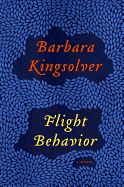 Flight Behavior (Harper Perennial, $16.99) by Barbara Kingsolver overlaps the personal challenges of a poor rural family with global environmental issues. Dellarobia, a wife and mother in Tennessee, discovers thousands of monarch butterflies in the valley behind the family's farm. The novel addresses how global warming changed the butterflies' behavior, along with the seldom-heard perspective of families living in poverty.
Flight Behavior (Harper Perennial, $16.99) by Barbara Kingsolver overlaps the personal challenges of a poor rural family with global environmental issues. Dellarobia, a wife and mother in Tennessee, discovers thousands of monarch butterflies in the valley behind the family's farm. The novel addresses how global warming changed the butterflies' behavior, along with the seldom-heard perspective of families living in poverty.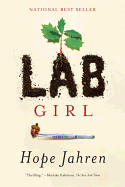 Hope Jahren is a botanist with a love of plants. Her memoir, Lab Girl (Vintage, $16), tells "the story of how my science is done with both the heart and the hands." This entertaining and engrossing book combines stories about Hope's work with accounts of her life since childhood, including some serious challenges. Sometimes laugh-out-loud funny and sometimes moving, Jahren's beautifully written book will make you want to go dig in your garden.
Hope Jahren is a botanist with a love of plants. Her memoir, Lab Girl (Vintage, $16), tells "the story of how my science is done with both the heart and the hands." This entertaining and engrossing book combines stories about Hope's work with accounts of her life since childhood, including some serious challenges. Sometimes laugh-out-loud funny and sometimes moving, Jahren's beautifully written book will make you want to go dig in your garden.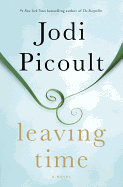 Jodi Picoult's compelling novel Leaving Time (Ballantine, $16) is a mother-daughter story that also delves into the plight of elephants, with fascinating information on their lives and the way they grieve. Thirteen-year old Jenna doesn't remember much about her mother, who disappeared 10 years ago, but she is determined to find her. Chapters alternate between her investigation and her mother's journals of her work with elephants, in Africa and at a sanctuary in New England.
Jodi Picoult's compelling novel Leaving Time (Ballantine, $16) is a mother-daughter story that also delves into the plight of elephants, with fascinating information on their lives and the way they grieve. Thirteen-year old Jenna doesn't remember much about her mother, who disappeared 10 years ago, but she is determined to find her. Chapters alternate between her investigation and her mother's journals of her work with elephants, in Africa and at a sanctuary in New England. 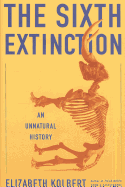 The 2015 winner of the Pulitzer Prize for Nonfiction, The Sixth Extinction: An Unnatural History (Picador, $17) by Elizabeth Kolbert, is an engaging account of five mass extinctions that have occurred on Earth and the sixth one that scientists say is happening now. Kolbert clearly explains these unfamiliar ideas, showing how scientists came to recognize the role of mass extinctions and the growing evidence of the severity of the current one. --Suzan L. Jackson, freelance writer and blogger at Book By Book
The 2015 winner of the Pulitzer Prize for Nonfiction, The Sixth Extinction: An Unnatural History (Picador, $17) by Elizabeth Kolbert, is an engaging account of five mass extinctions that have occurred on Earth and the sixth one that scientists say is happening now. Kolbert clearly explains these unfamiliar ideas, showing how scientists came to recognize the role of mass extinctions and the growing evidence of the severity of the current one. --Suzan L. Jackson, freelance writer and blogger at Book By Book



 American by Day is surprisingly comedic, given the heaviness of some of its subjects.
American by Day is surprisingly comedic, given the heaviness of some of its subjects.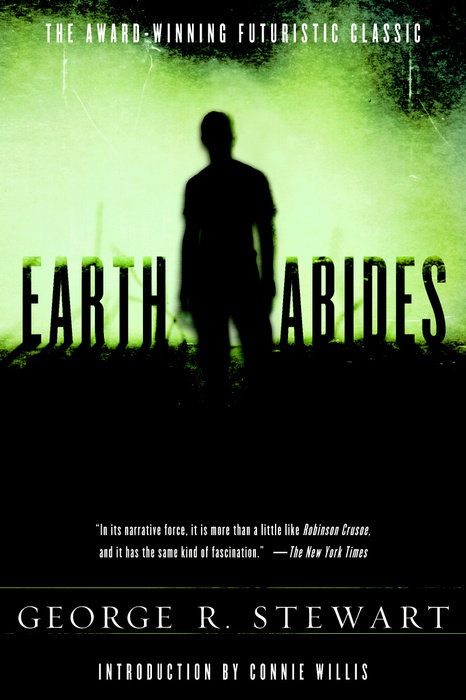 "When anything gets too numerous it's likely to get hit by some plague," muses the protagonist of George R. Stewart's science-fiction classic Earth Abides (1949). Geologist Isherwood Williams, also known as Ish, suffers a rattlesnake bite while working on his graduate thesis in the Sierra Nevada mountains. During his recuperation, Ish is struck by a measles-like illness, which he soon discovers has killed nearly everyone else. Ish finds a handful of other survivors, travels a depopulated country and bears witness to ecosystems now freed from human civilization. As a primitive society rebuilds over several generations, Ish becomes more relic than leader, called the Last American with awe and respect by superstitious, bow-and-arrow hunting tribesmen.
"When anything gets too numerous it's likely to get hit by some plague," muses the protagonist of George R. Stewart's science-fiction classic Earth Abides (1949). Geologist Isherwood Williams, also known as Ish, suffers a rattlesnake bite while working on his graduate thesis in the Sierra Nevada mountains. During his recuperation, Ish is struck by a measles-like illness, which he soon discovers has killed nearly everyone else. Ish finds a handful of other survivors, travels a depopulated country and bears witness to ecosystems now freed from human civilization. As a primitive society rebuilds over several generations, Ish becomes more relic than leader, called the Last American with awe and respect by superstitious, bow-and-arrow hunting tribesmen.